Free Shipping on orders of $49+ | Signup for Direct Rewards
Free Shipping on orders of $49+ | Free Store Pickup | Signup for Direct Rewards
Free Shipping on orders of $49+ | Signup for Direct Rewards
Free Shipping on orders of $49+ | Free Store Pickup | Signup for Direct Rewards

In celebration of American Adventures month, we thought we’d dig in and find the best aquatic adventures in the US. Okay, let’s get real, we’re divers, snorkelers, and adventurers at heart. So…we are a bit focused on diving, but wanted to include snorkeling and freediving too. And what’s better than an American Adventure with friends or family?
Note that the diving and freediving in these spots range from beginner to advanced with some offering experiences for the well-trained technical diver. So before you start planning your adventure, make certain you check out the location and ensure you have the proper training and certifications necessary. Additionally, we highly recommend that all watersports enthusiasts check the current and tide before heading out into the water. Safety first.
With that out of the way, let’s dive in.
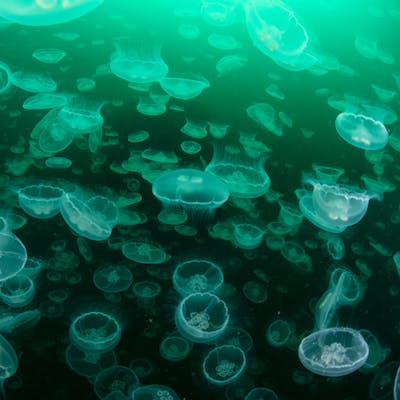
Okay, okay…yeah our first thought was ‘Are you nuts?’ also. But for real, Diving Baranof Island to see mass amounts of moon jellyfish and Snorkeling Ketchikan in the southern part of Alaska just got added to our bucket list. And a trek to Dive Prince William Sound and see the moon jellyfish blooms or do an epic wall dive sounds totally worth it. Don’t get us wrong, you will need a bit more gear than diving in south Florida.
The breathtaking amounts of moon jellyfish off Baranof Island are a short boat ride to the east at a dive site named Smudges. A narrow canyon that offers an incredible experience, you can expect the dive to have a maximum depth of about 80 feet. A cold water dive, this isn’t for everyone. Wooden Fingers is another dive site that you don’t want to miss while you’re there. This site is off the south end of the island and offers diverse marine life. Among the amazing and beautiful ocean dwellers you’ll likely encounter are North Pacific Giant Octopus, Wolf Eels (they might tag along for the dive), Red Irish Lords, and the beautiful Metridium. This dive is in cold water and requires you to be an advanced diver. You’ll definitely want to check in with a dive charter operation up there before packing for this dive trip.
With a shore entry and a maximum depth of 26-30 feet, Mountain Point beckons all aquatic adventurers. From shallow tide pools to underwater rock walls, the varied environments are host to an array of ocean dwellers. With an average depth of 15 feet, whether you stay on the surface and snorkel or dive below, there’s plenty of marine life to keep everyone’s attention. A perfect location for the whole family, you might not even notice how cold the water is once you’re checking out all the amazing creatures.
A little further north, whether you choose to dive Prince William Sound out of Whittier or Valdez, you’re sure to be treated to some amazing dive sites. Drawing underwater photographers, divers, and spearos alike, we’re focusing on Whittier here.

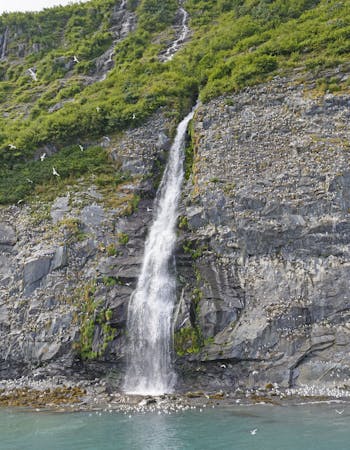
Smitty’s Cove is a shore dive out of Whittier. A protected marine park, this dive location offers WWII wrecks, sunken cranes, and planes that play host to a variety of marine life. Note that you’ll want to visit this site late September through early May due to natural water runoff the remainder of the year. If you’re looking to increase your cold water diving experience…I think we just found your location.
Kittiwake Rookery is for the experienced, advanced, and technical divers. About a 10-minute boat ride from Smitty’s Cove, you’ll enjoy an amazing wall dive. First, your drop point is at the furthest waterfall. Yeah…epic. Once below the surface, as you explore and the bottom angles down, keep an eye on your depth. At about 100 feet below, the bottom drops off into the abyss. If you drop past about 130 feet below, you’ll notice a distinct difference and lack of marine life, other than a few sponges.
Port Fidalgo offers clear waters for divers to experience the amazing sight of Moon Jellyfish blooms. And though moon jellyfish don’t sting, there are quite a few Lions Mane Jellyfish in the area. Beautiful to photograph, the Lions Mane jellies pack a powerful sting so you’ll want to avoid their long tentacles.
With a plethora of dive sites all up and down the coast, it’s hard to pick just a few. So here’s the best we could whittle it down to. There’s no doubt whether you’re diving, snorkeling, or freediving in California…there’s a lot to see.
On the east side of the island, down by Avalon, you have both Lover’s Cove and Casino Point Dive Park which are perfect for scuba diving, freediving, and snorkeling. Serving up some incredible experiences for beginner and advanced aquatic adventurers, you’ll explore in the well known kelp forests and might be lucky enough to see a giant sea bass. Just be careful not to get tangled up in the kelp as you gape in awe at the amazing marine life dwelling here.
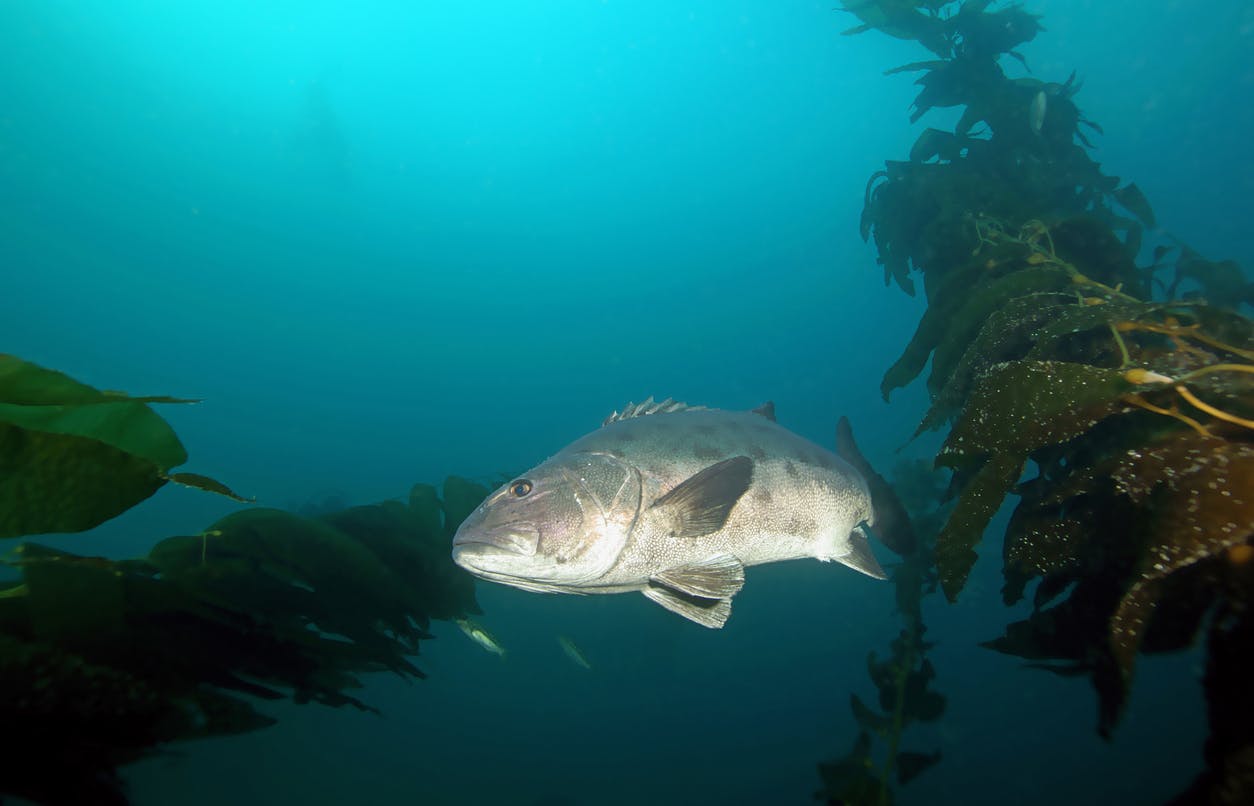
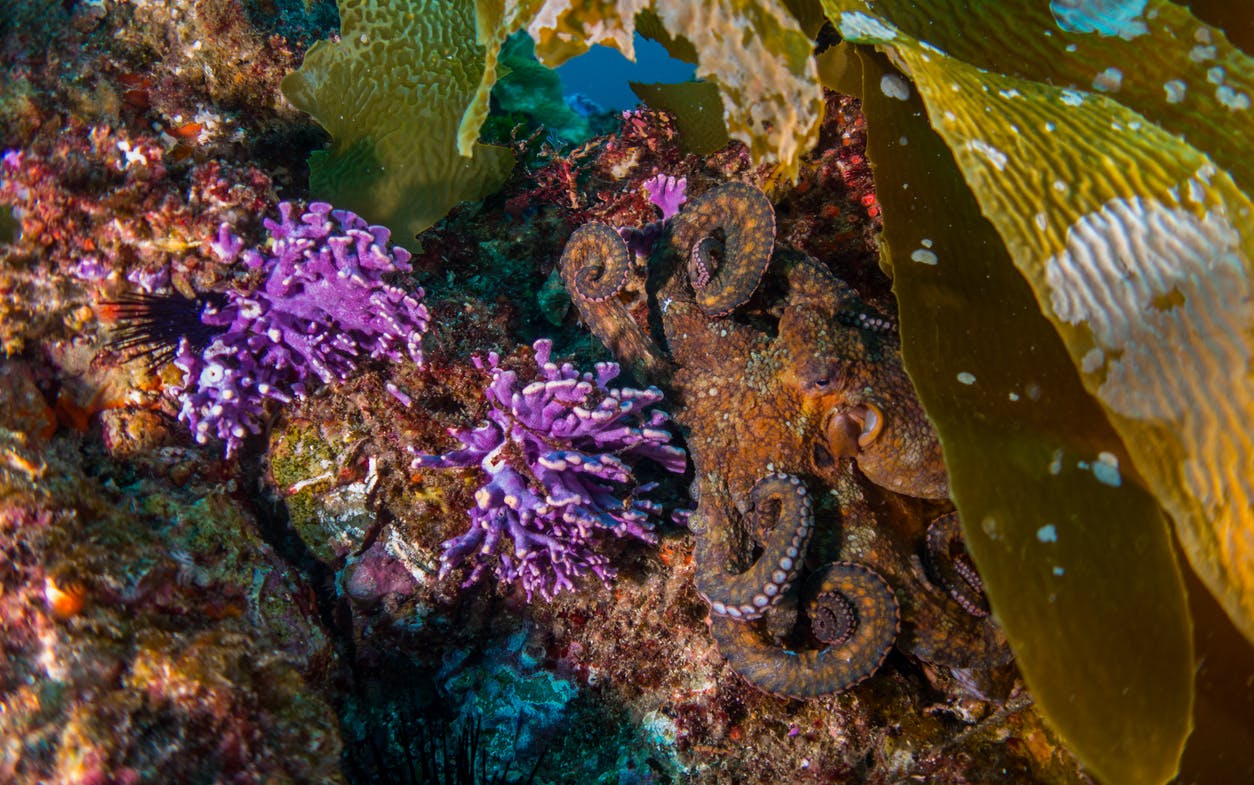
If you’re a more advanced diver and looking for something a bit more challenging, you need only take a short boat ride about 2 miles off the west coast of Catalina. That’s where you’ll find Farnsworth Bank, a dive that starts at about 65 feet below the surface and goes down to about 160 feet. With strong currents…you gotta hit the numbers or all you’ll see is sand. Venturing out to Farnsworth Bank, you’ll descend to find an underwater mountain with sharp pinnacles alive with lush sea life. You’ll be rewarded with purple hydro coral, possibly some sea bass, and other pelagic ocean dwellers. Totally worth the trip and if your certifications aren’t up to par, perhaps this is the nudge you needed to level up your dive training.
La Jolla Cove is a treasure trove of diving, freediving, and snorkeling sites. In the cove, you’ll enjoy the kelp forest with a variety of ocean life and a maximum depth of 45 feet. Perfect for the whole family, this location will keep everyone engaged whether you’re diving, snorkeling, or freediving. For those who like an occasional night dive, you’ll be treated to some amazing creatures including bat rays and two ringed octopus. If you time it right, you might even get to see a few squid, giant sea bass, and a few sharks (Tope and Sevengill are most likely).
About 2 miles off Mission Beach lies The Yukon, a wreck that was sunk in 2000 to become part of what’s known as Wreck Alley. Requiring some experience, this area sees sudden current changes so you’ll want to make sure you’re prepared. The Yukon lies in 100 feet of water and the dive on her starts at 60 feet. Penetrable, make certain your training is up to par before you start exploring any of these wrecks. Surge happens.
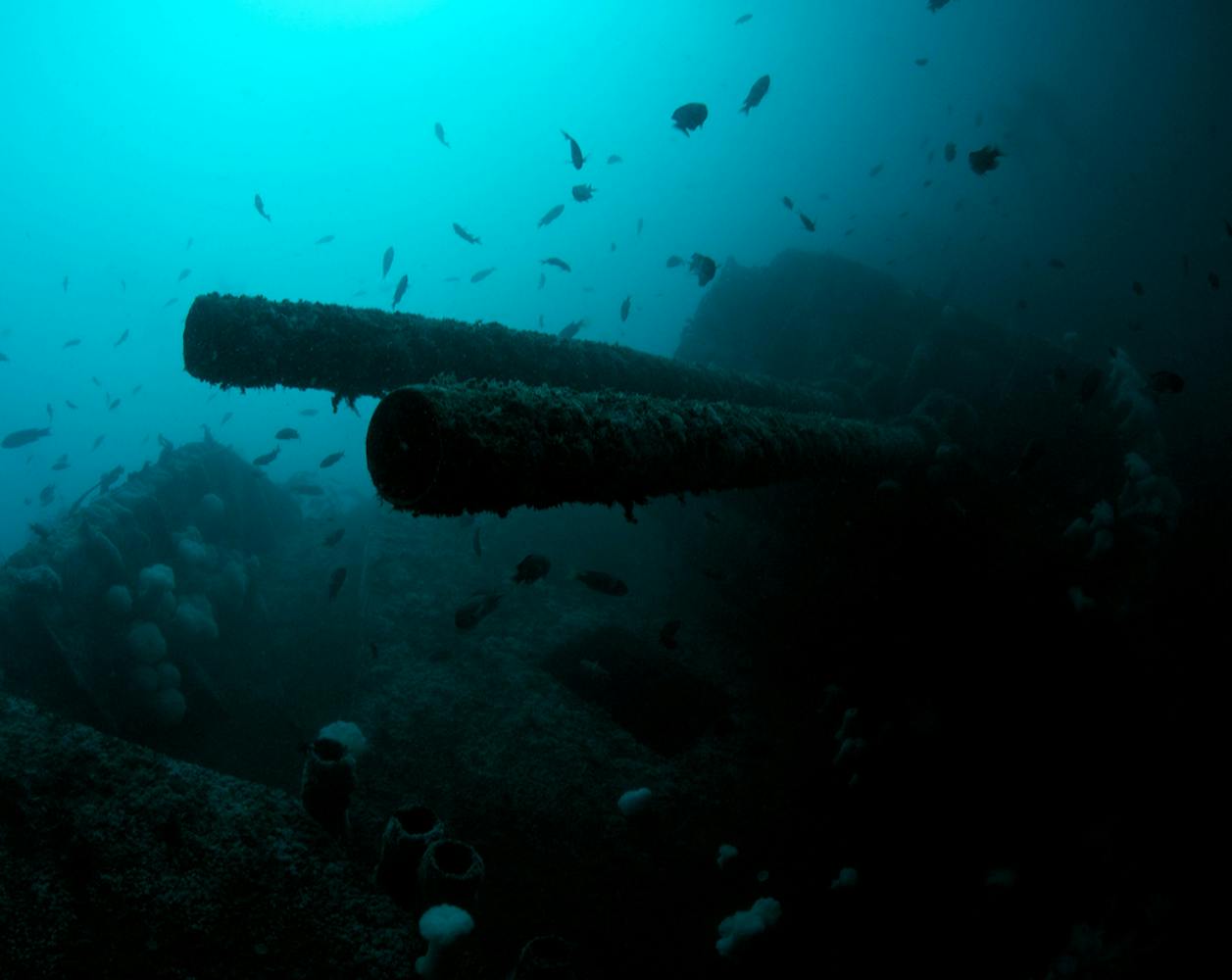
Though we could spend a year talking about all the lovely dive and snorkel sites in this area alone, we must be movin’ on.

Though there are a plethora of beach dives, snorkeling, and freediving in the area, including Shaw’s Cove, Crescent Cove, and Bird Rock, we’re choosing to focus on Crystal Cove State Park and the Reef Point dive site. With visibility reaching about 35 feet, the recommended depth for this dive is 30-40 feet, although the max depth should be about 60 feet. Note that the rocky entry, current, and long surface swim require you to be more advanced in your dive training.
Is the extra work worth it? Totally. With an array of marine life, this reef is alive. Between the Blue Banded Gobies, Garibaldi, Sand Bass, Bat Rays, Octopus, Blennies, and Moray Eels…you might want to dive this site multiple times to see it all.
Though there are strict regulations for the Point Lobos dive site…it’s worth jumping through the hoops.With 26 dive sites in this one area ranging from beginner to advanced, there’s something for every skill level here. Depths range from 10 feet to about 200 feet, so make certain you keep an eye on your depth and stay within your range of training and comfort. Heck, there’s even an overhead environment to dive in if your training is up for it. Because the dive site is protected, make certain you check out the rules and regulations before heading to this dive site. You’re gonna need a permit.
As if Point Lobos wasn’t enough, go ahead and venture to the Monterey Bay National Marine Sanctuary. Again you’ll find kelp forests, rocky reefs, sandy ocean floors, and a plethora of ocean dwellers. Boasting the largest and deepest (depths of up to 2 miles) of the national marine sanctuaries, the diversity of marine life will amaze and entrance you. Just don’t forget to keep an eye on your depth and air supply while you explore this treasure trove of dive sites.
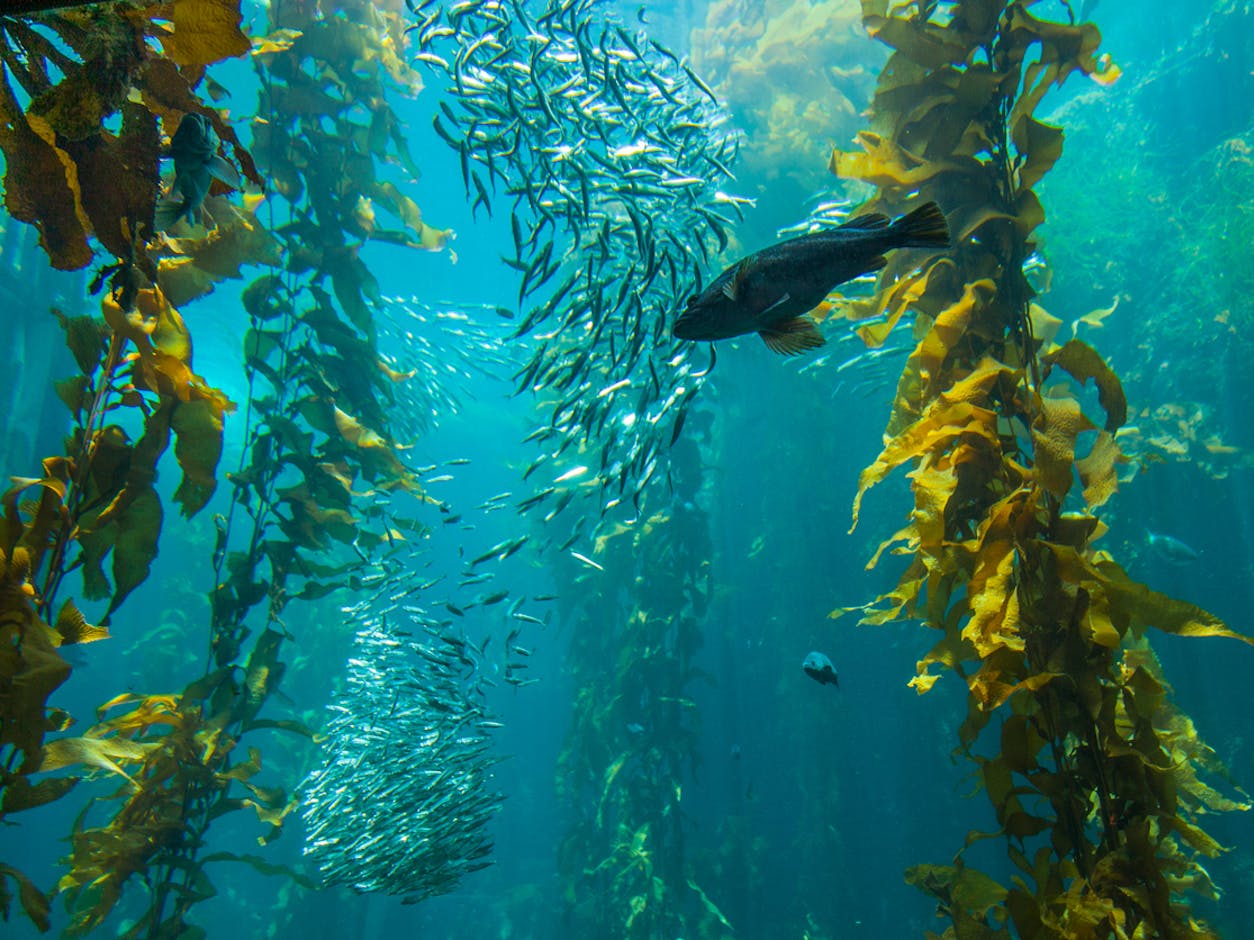
Can we just list the entire state here? With more dive sites that we can write about, the state of Florida is home to a vast array of Scuba Diving, Snorkeling, and Freediving sites in fresh, brackish, and salt water environments. Shall we dive into a few of our favorites?

This lovely little gem offers areas where you can see manatee up close. Visit Three Sisters Springs or Homosassa Springs to get up close and personal with these lovely creatures. But not too personal, there are many rules around how you are and are not able to interact with these endangered species.
If you’re looking to dive an advanced, technical wreck, may we suggest the USS Oriskany? This dive starts at about 84 feet down with the ocean floor being around 212 feet underwater. So make certain your dive training is up to the task before heading out to this one. At 911 feet in length, there’s plenty to see and explore.
If deep wrecks aren’t your thing, stop over to check out the Shark Dives or Shark Snorkeling in West Palm Beach. You’ll typically see Bull Sharks, Lemon Sharks, Silky Sharks, and if you time it just right, you might get treated to a Tiger Shark or Hammerhead Shark. You never know who’s showing up to the party here. Several dive boats offer different shark diving and shark snorkeling experiences, so check them out and select the one that’s right for you.
Alternatively, for a low key chill kind of day for the whole family, Phil Foster State Park is a great option. Here you typically have a depth of up to 25 feet and whether you’re snorkeling, diving, or freediving, there’s so much to see. If you’re lucky, you might even see a seahorse - but don’t touch them…they’re protected.
What can we say, all the islands have a little something special in this area. And you’re sure to find just the right dive, snorkel, or freedive trip somewhere along the Florida Keys National Marine Sanctuary. May we suggest specifically the Spiegel Grove? Near and dear to our hearts, the Spiegel Grove is an amazing wreck dive that offers something new to discover on every single dive.
A group of islands where, if you can’t find somewhere to snorkel, dive, or freedive…you’re not trying. Spending a week in the water around each of the islands would be a dream, but since we don’t have that kind of time on our hands, let’s get to our favorite spots.
Just off the south coast of Maui is Molokini Crater which offers some amazing diving and snorkeling adventures. Whether you’re looking to check out ocean life floating on the surface, aiming to drop into a technical dive to about 250 feet, or anything in between, there’s something for everyone here.
And if a boat ride to Molokini isn’t for you, check out Black Rock Point, located at the north end of Ka'anapali Beach. Snorkeling, diving, and freediving are great in this area and with it right off the beach, very accessible. Who knows, you might even decide to partake in the tradition of jumping off the rocks at sunset too.
Another great site to visit is the Papalaua Wayside Park for some awesome snorkeling. A public park, this location is only open sunup to sundown…so you’ll want to plan accordingly.
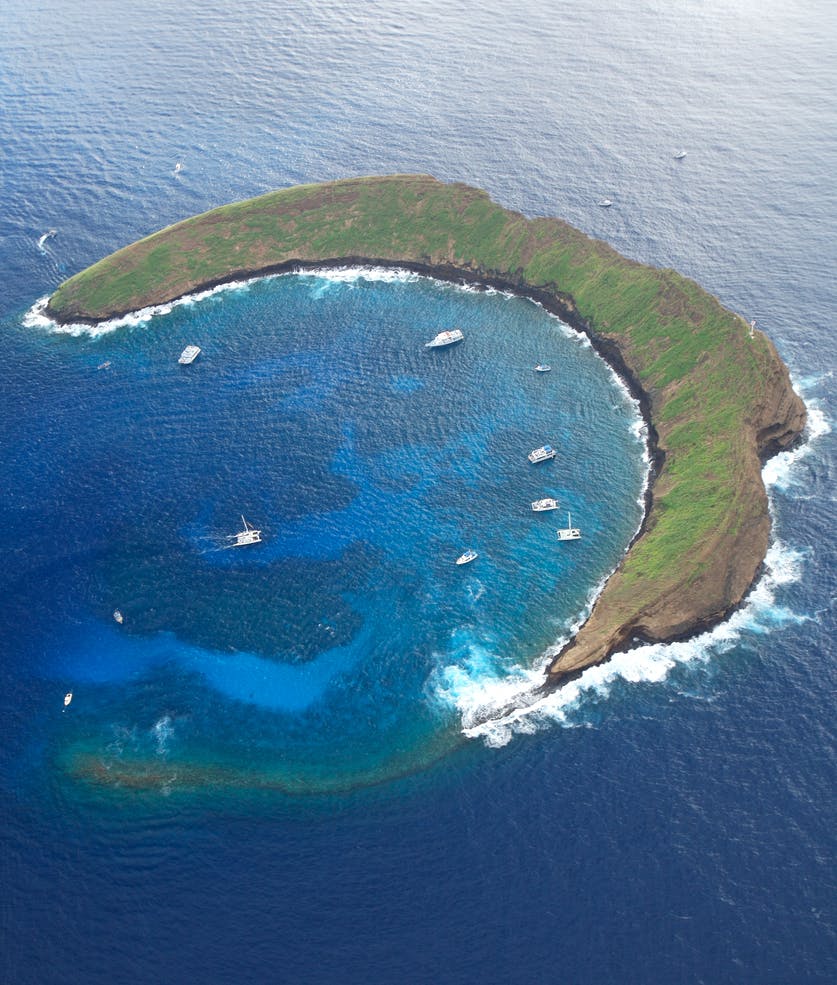

If you’re looking for a night dive, the Manta Night Dive off Kona is incredible. With this being one of the most popular dives on the island, many dive operations offer different experiences. Find the one that’s right for your group and make sure you take lots of underwater pictures. Of course, diving and snorkeling during the day is also a very popular activity. Just about anywhere you slip into the water will reward snorkelers and divers alike with some incredible experiences. I had a sea turtle come swim right alongside me for the duration of my snorkel adventure in Makaiwa Bay.
Kealakekua Bay is a site to make sure is on your list to visit, not just for its historical significance, but there’s some great snorkeling there too. And you might just get rewarded for your adventurous nature as spinner dolphins are known to be in this area.
Makaha Beach Park, though known for surfing, is an excellent site for diving and snorkeling when the conditions are right. You’ll want to check conditions and make certain to visit Makaha Caverns if you plan it just right. Arches, caverns, and overhanging ledges alive with a variety of marine life make this a great site to explore time and time again. If you’re looking to snorkel, check out Hanauma Bay Nature Preserve. Though access is limited and you’ll have to make a reservation to visit this beach, the snorkeling is reported to be worth the extra hassle.
Though unexpected, the Haigh Quarry in Kankakee is quite the dive spot with depths up to about 50 feet. Offering recreational and technical dive opportunities, you’ll want to make a reservation before you go. Heck, once you’re down there, you might even decide to take the underwater tricycle for a spin. Nope, we’re not kidding. There’s a tricycle and a few of the three wheeled hot wheels from our youth down there that occasionally see a scuba diver or two using them…
Not for the faint of heart nor the inexperienced diver, Acadia National Park offers a plethora of dive and snorkel sites. Though a few are accessible by shore, most require a boat ride in these cool (ok, frigid) waters. Depths range from about 20 feet to over 80 feet, so make certain you’re comfortable with the dive profile for the site(s) you choose. You’ll definitely want to prepare and plan before heading up for these dives, but you’ll be rewarded with granite walls and vibrant ocean life. Even if you spend a week here, we doubt you’d see everything there is to see…so perhaps this is cause for that month-long dive trip? Just sayin’...not a bad place to spend July.

Though all of Lake Huron beckons with 12 underwater wreck areas to check out, when diving these frosty waters, there are two areas that call out to us more than the others.
The DeTour Passage Underwater Preserve is shore and boat accessible, which is part of why it’s at the top of our list in this area. As you venture down into the depths, you’ll be greeted by several ships that have fallen to rest on the shallow floor in this area. With the shallower wrecks resting just below the surface and the deeper ones reaching up to 85 feet in depth, there’s something for everyone here. These ship’s misfortunes are your reward as you explore and experience the life that now takes up residence in these wrecks.
Visiting Sanilac Shores Underwater Preserve, you’ll experience excitement above and below the water. With at least 16 shipwrecks to explore at depths ranging from 10 feet up to 120 feet below the surface, we’re certain that everyone you’re diving with will find something to pique their interest while exploring in this area. And the aquatic life will keep you coming back for more. Again. And again.
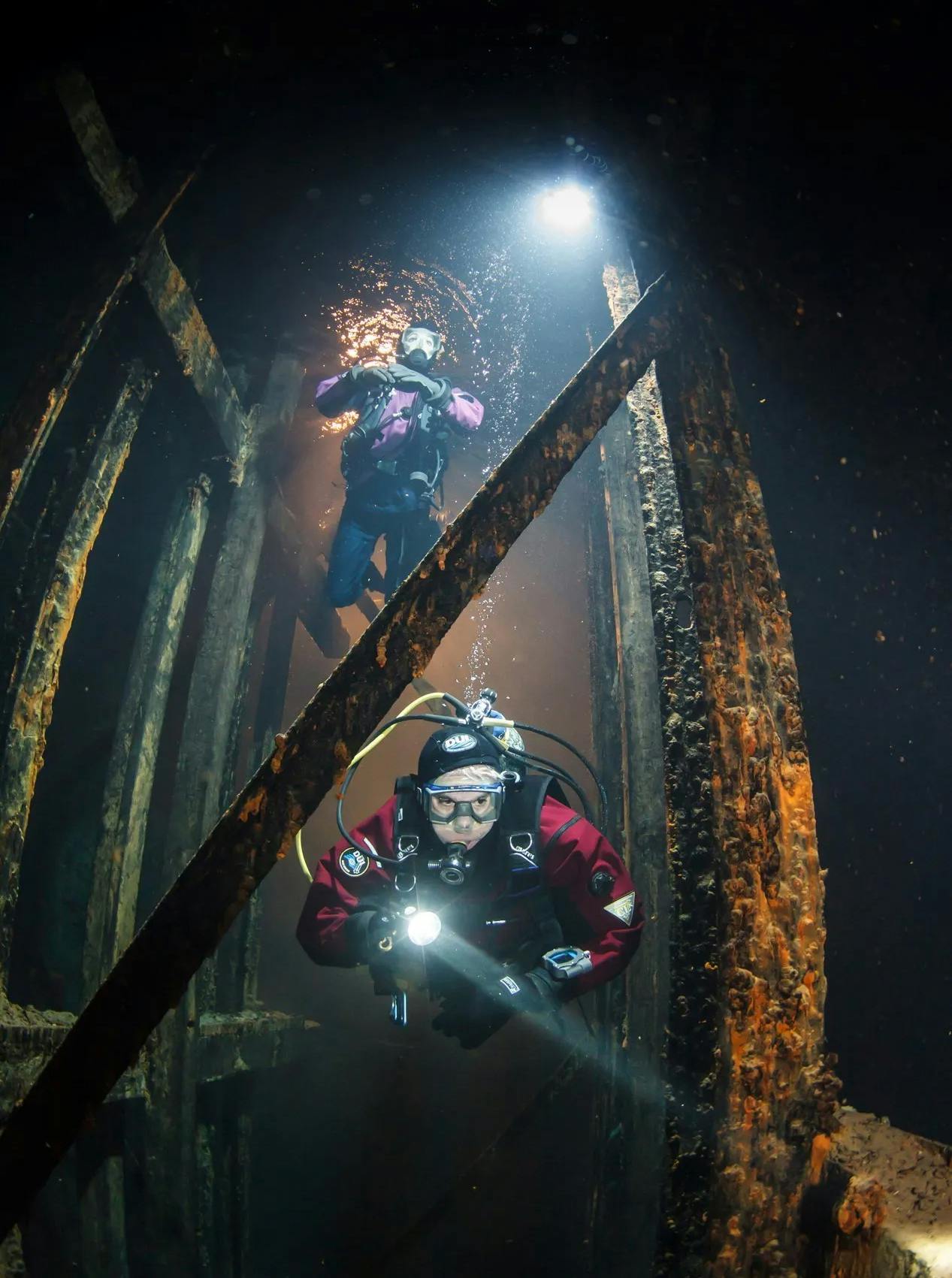
Explorable by foot, boat, or dive, Bonne Terre Mine offers a unique experience with over 100 feet of visibility and 24 dive trails. Dives range from 40-60 feet in depth and you’re exploring what once was a working mine. Boasting a billion gallon lake (yeah, we’re not counting - we trust ‘em), huge archways and pillars, as well as mining artifacts…how many of the dive trails are you going to go check out?
Though there are many a dive sites along the coast of New York, who can resist talking about a WWI wreck? Yep, World War One. The USS San Diego Wreck, which is the only major warship lost in WWI, was sunk by a mine placed by a German U-156 back in 1918. She’s been down there a while so there’s plenty of marine life to explore and enjoy while you check out this old beauty. With the dive on the San Diego starting at 65 feet and going down to about 110 feet, you’ll need to have advanced certification to dive on her, but it’s totally worth it. We also recommend at least a wetsuit at that depth too.
With a few of the most epic dives and one heart stopping historical dive, we feel that North Carolina should be on every diver’s list of underwater sites to see.
With 10 marked sites on the map, this area alone plays host to over 2,000 shipwrecks. Offering so much more than just shipwrecks, you’ll also get to see abundant marine life including manta rays, sharks, and everything in between. So whether you’re just getting your feet wet or have been diving for decades, Morehead City will keep calling you back to check out more of her ocean floor year after year.
Did you know that you can dive a German U-boat right off the coast of North Carolina? Yep. The U-352 is a German WWII submarine that was involved in the Battle of the Atlantic and is actually the first U-boat sunk by the USCG in that battle. Around 220 feet in length with a dive beginning at 115 feet deep, you’re going to need advanced certification (at the least) to check out this historically significant dive site. With abundant marine life and the significance of this site, it’s so worth it. Like kids in a candy store, we can’t get our wetsuit on fast enough to go check out this amazing wreck that is, in our opinion, heart stopping. As soon as we surface, we’re asking…’Can we go again…?’
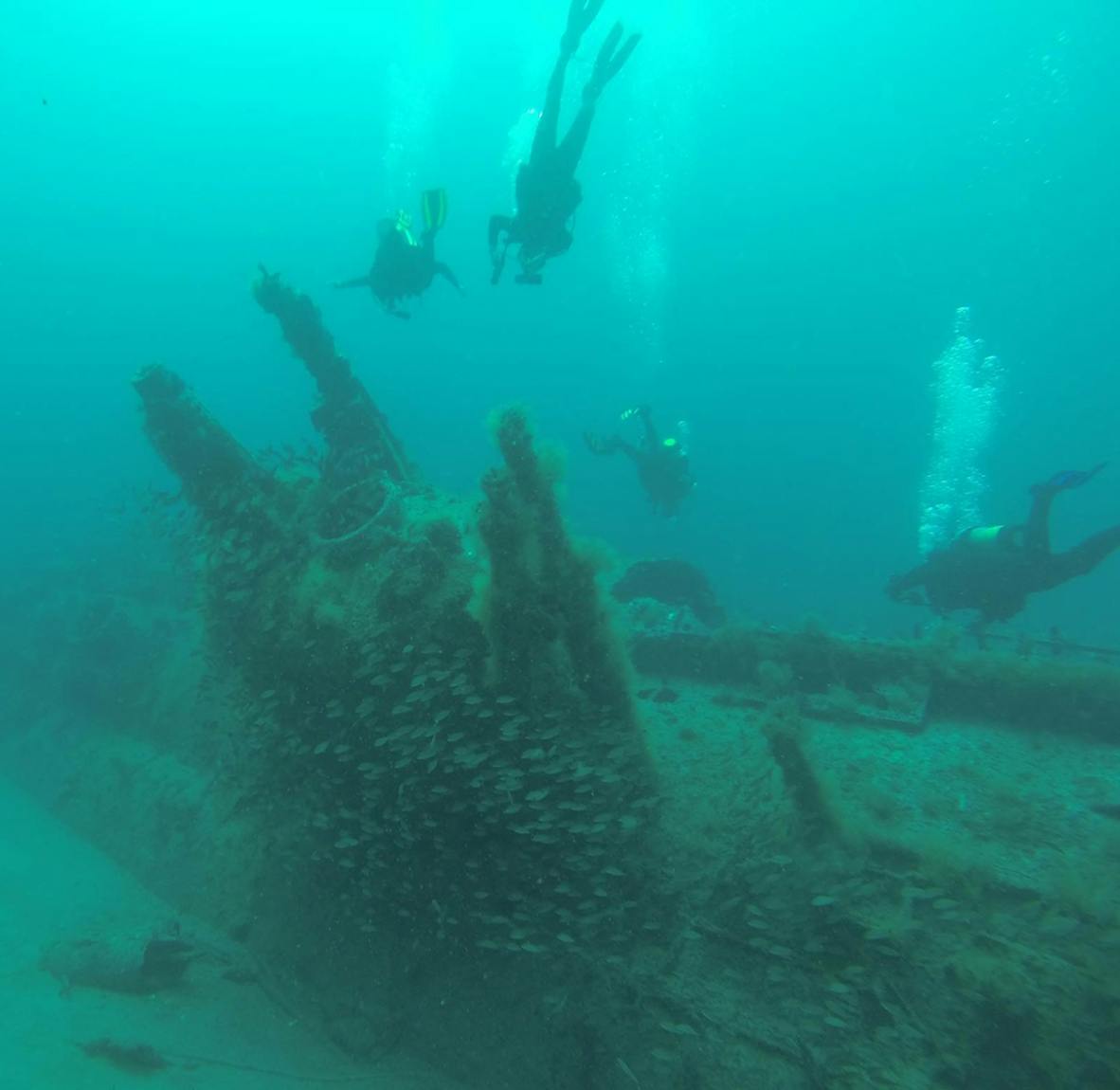
Snorkeling abounds at Surf Beach on Block Island. An easy beach entry that features rock formations and a breakwater, the whole family will enjoy this day in the water. Want to take home a souvenir? One of those shells or sand dollars (we call them mermaid money) will easily remind you of a day spent exploring a myriad of sea life.

Diving and Freediving in the Gulf of Mexico at Flower Gardens Banks National Marine Sanctuary offers you roughly 160 square miles to explore 17 different reefs and banks. Accessible from both Texas and Louisiana, these dive sites are mostly natural reefs and ledges, but do include an oil rig platform that seemingly incidentally got included in the sanctuary boundaries. With so many miles to explore underwater and so much marine life to see and enjoy, this is yet another set of dive sites that we recommend visiting time and time again.
If you’ve ever wanted to dive or snorkel in this great state, then you definitely want to check out Homestead Crater in Midway. This limestone rock hot spring gem offers temperate water and natural light (though limited) from the opening in the dome for your adventures. Though not teaming with aquatic life, there’s still plenty to see and explore here with depth maxing out at 65 feet.
The pacific northwest is home to many great dive sites and there’s so much aquatic life to see. You can dive your way from Fox Island all the way up through Puget Sound and out into the Salish Sea. You can even spur off towards Port Susan for a few more dives. And there are a couple of dives down in Hood Canal that you might wanna check out too. You’ll need a few weeks to do this, of course…and some great cold water dive gear as well. But you got this, right?
I mean, if AAA recommends Alki Beach as one of the best dives in Washington state, who are we to argue? In fact, we’re right there with them. Day or night, this lovely beach dive is sure to delight every diver. Don that wetsuit (or drysuit) and drop in to check out those awesome stubby squid. It’s totally worth it.
Another little gem that is sure to delight is Edmonds Underwater Park. And don’t miss Day Island Wall where you’re likely to run across a wolf eel. With depths ranging from 5 to over 75 feet all up and down the area, just go. Dive. Enjoy. There’s something for every level of diver and so much to see…we just can’t even begin to describe it all. And though we are not personally cold water diving fans…we’re totally intrigued and investing in the right gear for these dives.I mean, when the ocean calls…we must answer, right?!
Whether you’re diving or snorkeling, Door County offers a plethora of sites. However, Baileys Harbor, home to multiple shipwrecks, is a destination you don’t want to miss. Offering relatively shallow dives and wreckage visible from the surface, you’re sure to enjoy the aquatic life and exploring the wrecks that now call this lake floor home.
There are many dive sites and states that didn’t make our list. Does that mean they’re unworthy? Nope. Not at all. There are plenty of bucket-list worthy sites that didn’t make it onto this list due to lack of space and time…and perhaps a reason to write another list in the future.
For now, we’re heading out to explore and spending our surface intervals researching for future dives. After all, dive = life.
Written by Kelly Depp

We prefer taking ours, but either way, you’re good. One of the benefits of owning good travel dive gear is that you’re already familiar with the gear and you know when it was last serviced. Plus you have gear that you know will fit.
Unless you have struggled with getting the right fit on a mask or fins, you’re ok leaving the snorkel gear at home. However, if you have a set you love and have the space in your luggage, it’s perfectly acceptable to take your gear with you.
Yes. When it comes to freediving gear, your gear plays into your training. Fin blade length, material, composition, and mask volume are important.